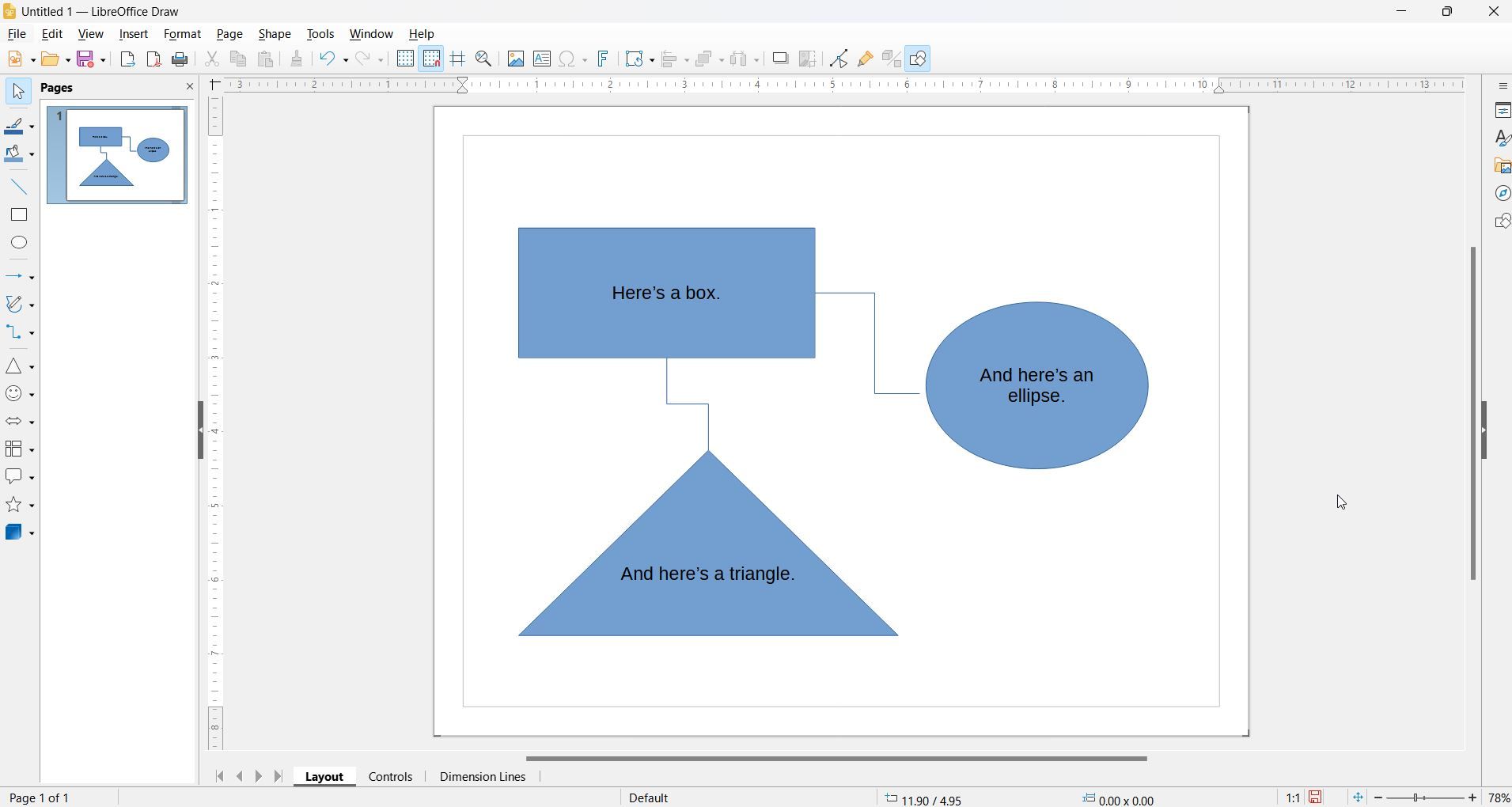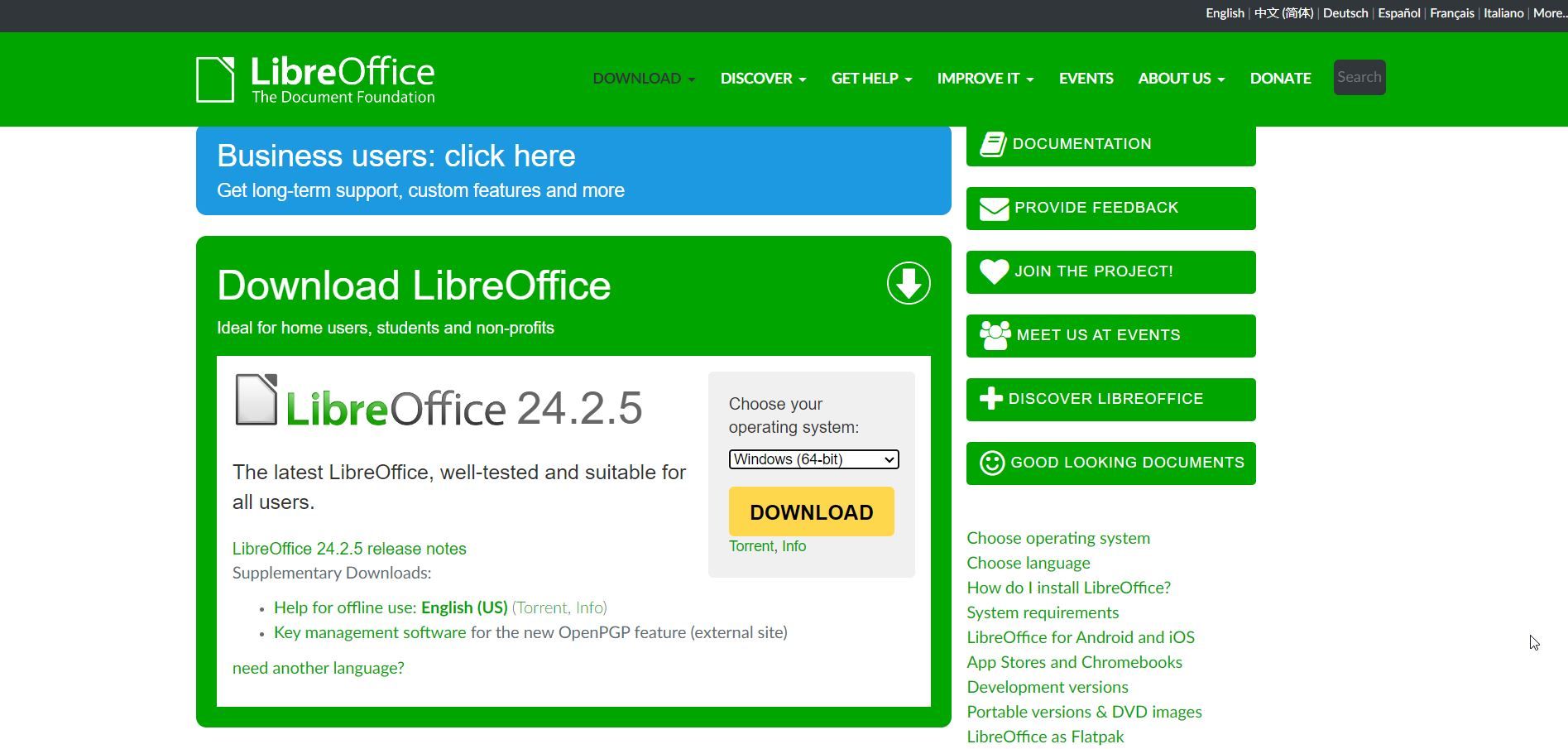Key Takeaways
- LibreOffice is free which makes it hard to justify paying for Office 365 as an ordinary user.
- LibreOffice can read & write Microsoft files, reducing compatibility issues.
- LibreOffice has many features, including Base for simple database projects.
Microsoft 365 is the software giant’s attempt to take its venerable Office suite of applications into the cloud. But the open-source LibreOffice suite has everything I need to be productive on my local machine. Let me explain why I use it instead of shelling out for a Microsoft 365 subscription.
LibreOffice Is Free
The main reason that I use LibreOffice is that it’s free of charge. I don’t have to pay a monthly or yearly fee just to create and open documents. Various vendors offer paid support, but it’s mainly for businesses.
That alone makes Office 365 hard to justify as an ordinary user.
LibreOffice Works With Microsoft Office Files
One reason that you might want to buy a Microsoft 365 subscription is to read and write files made by other people who use Microsoft Office apps, including Word and Excel.
While LibreOffice saves and writes in its own Open Document Format (ODF), it can read and write many different types of files. This includes Word documents and Excel workbooks.
There might be some small incompatibilities, but they are now less of an issue than in the past. One of my former clients only accepted Word documents, back when Office was still called Office, so I used LibreOffice Writer to save my articles as Word files. Nobody seemed the wiser that I wasn’t actually using Microsoft Word. It also likely helped that the formatting for these pieces was minimal.
LibreOffice Writer is still my go-to program for drafting copy, including this article. It helps that many keyboard shortcuts from Microsoft Word also work in LibreOffice.
LibreOffice Has Lots of Features
One of the best reasons to use LibreOffice is for the many features this free software suite includes. Sure, you can use Writer and Calc to handle word processing and spreadsheets, but there’s so much more.
Base is a relational database that you can use for simple database projects. Draw is a diagramming tool, similar to Microsoft Visio.
While LibreOffice may look like a visual throwback to the ’90s, it’s jam-packed with features. This is why I keep coming back to it.
LibreOffice Is Cross-Platform
One thing I’ve long appreciated about LibreOffice is that it’s cross-platform. It’s a staple of Linux desktop installations, but it also works on Windows. My love affair with LibreOffice dates from before it was forked from OpenOffice.org. When I was a Mac user, I used NeoOffice, a macOS port meant to conform more closely to that platform’s UI (it’s no longer active, and the developers recommend the mainline LibreOffice as a replacement).
If you want the cloud experience of Google Docs or Microsoft 365, the commercial offshoot Collabora Online is also available. It seems that Collabora could be to LibreOffice what Red Hat or Canonical is to Linux, offering commercial support for open-source software. They also have mobile versions available. There’s even an experimental web-based version.
LibreOffice Keeps My Information Private
Another reason I lean toward LibreOffice over Microsoft 365 or Google Docs is that it doesn’t connect to any cloud services by default. If my internet connection goes down, I can keep working until it recovers. Yes, I know this is possible on both platforms, but I prefer to keep things simple.
By default, my information stays local. This helps keep it away from prying eyes.
I Can Sync My Files With LibreOffice if I Want To
I can set up syncing for my files if I want to. I have a choice of services available, including Dropbox or Google Drive. I still like to have cloud-based backups of my files, available across my devices when I need them, instead of the all-or-nothing approach of Office 365 or Google Docs.
If I only want to sync one file or directory, I can do so. If I was working with something more confidential, I might prefer to keep it offline.







